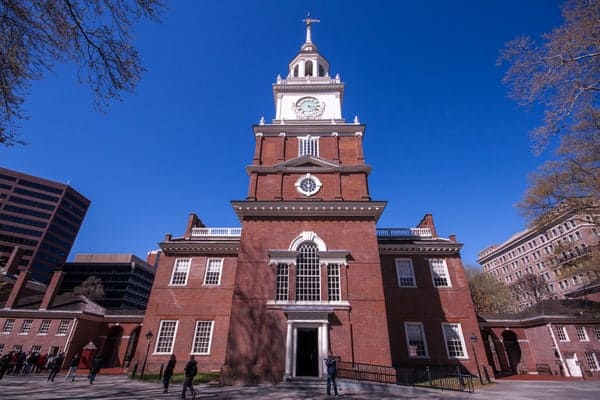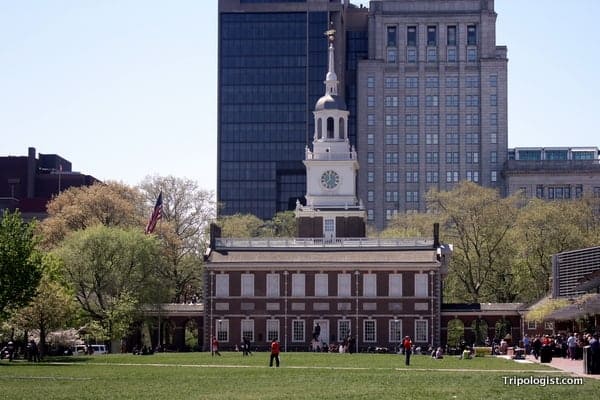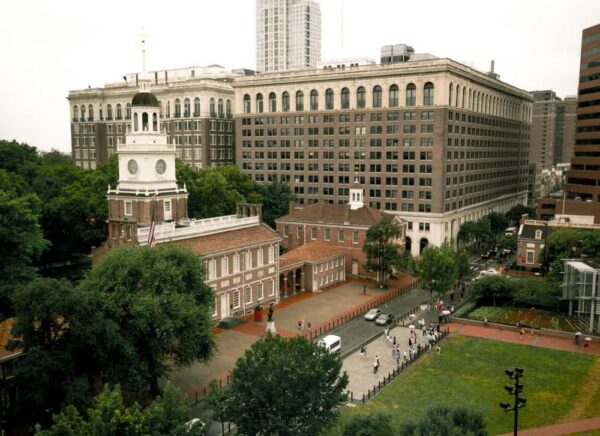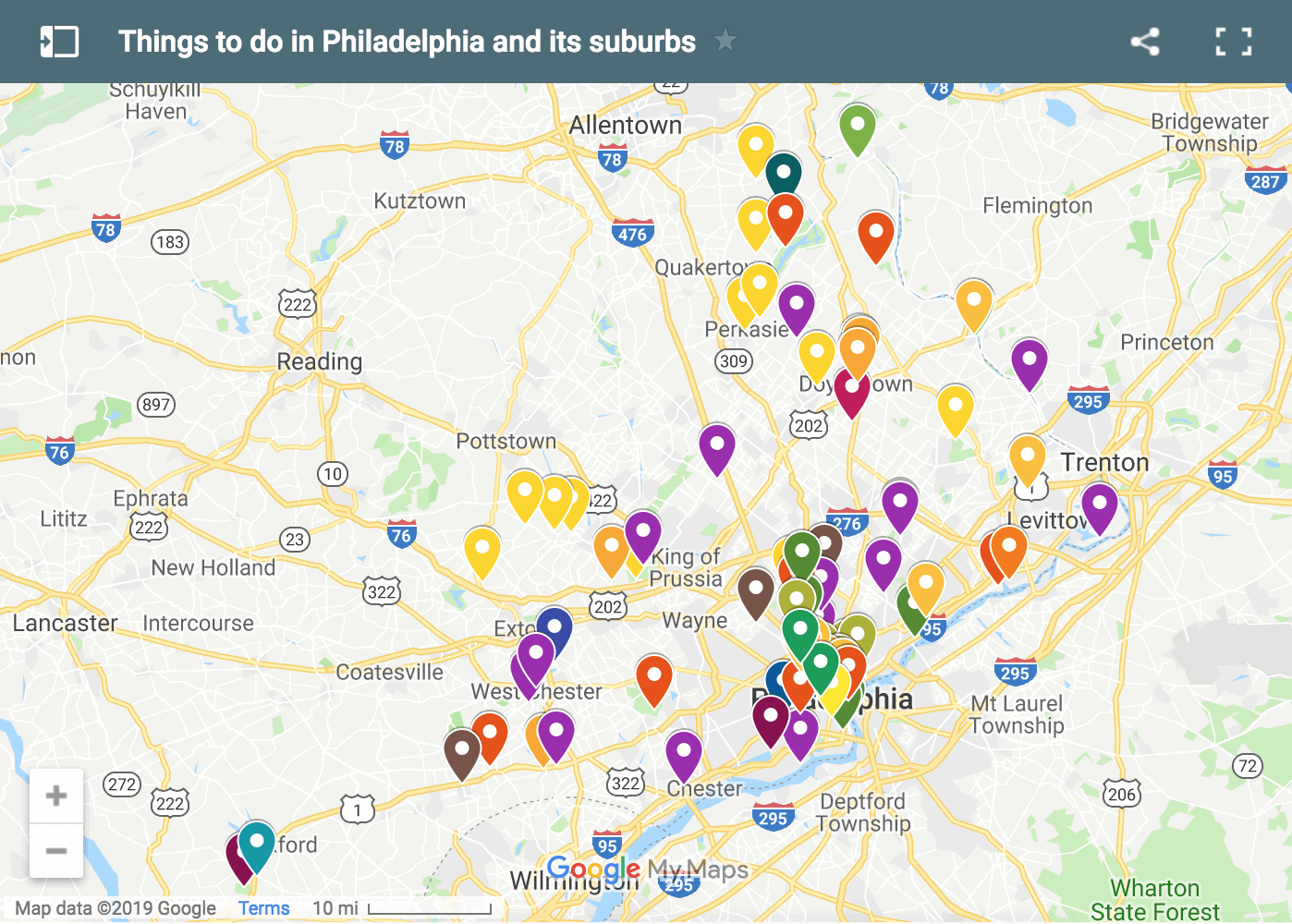Believe it or not, despite traveling in Pennsylvania for nearly three years, visiting every county in the state, and spending a good amount of time in Philadelphia, I hadn’t visited Independence Hall since I was a child.
Don’t get me wrong, I’ve photographed the outside on several occasions. I’ve also popped in to the see the Liberty Bell. However, I hadn’t actually been inside Independence Hall in close to two decades.
Given that I recommended it as the one place to visit in Philadelphia, I figured that I should heed my own advice and revisit this important landmark.

Independence Hall is located in the heart of Philadelphia’s Old City. It was completed in 1753 as the colonial legislature building for Pennsylvania and originally known as the Pennsylvania State House.
While the First Continental Congress chose to meet in Carpenter’s Hall, just a few blocks from the Pennsylvania State House, the Second Continental Congress opted to meet here when they convened May 10, 1775. They would stay, with the exception of the winter of 1776-1777, until September 1777 when they were driven out by the British advancements on Philadelphia.

It was during this time that the Declaration of Independence was debated, ratified, and signed. The Second Continental Congress was also responsible for organizing the Continental Army and other efforts to legitimize the American government.
The events that occurred inside of what would become known as Independence Hall make this building one of the most historically important buildings in all of the United States.
In fact, the entire Independence National Historical Site, which is made up of approximately two dozen buildings and monuments in downtown Philadelphia was recently proclaimed a UNESCO World Heritage Site for its significance to world history.

Tours of Independence Hall last 30-40 minutes and allow visitors to see the ground floor portions of the building. Groups of up to 80 are first guided into a large room in the building’s wing where a park ranger offers an introduction to the building and what happened there.
I was very impressed with the lighthearted and interesting way that our guide offered this introduction. It was clear that she was very knowledgeable about the building and enjoyed interacting with the guests.
After the short introduction, visitors are guided through the front entrance of Independence Hall. The tour first stops in the Supreme Court Room. This was where the Pennsylvania Supreme Court met during the 1700’s (The US Supreme Court met in another room in the complex). While here, guides offer information about the legal process during the 18th century.

The second room on the tour is the Assembly Room. It was here that the Declaration of Independence was debated and ratified in the summer of 1776.
While only one chair is original to the room, it has been set up as it would have been during that fateful summer. It is fascinating to stand in this room and think about the people who stood in the room and the history that happened in that spot.
Guides also point out the building’s connection to America’s 16th president, Abraham Lincoln, who lay in repose in the room after his assassination in 1865.

After seeing these two rooms, the official tour of Independence Hall is over. However, before exiting the secured area, there are two more buildings worth checking out.
The first is the Great Essentials Exhibit, which is located in the western wing of Independence Hall. Here, visitors can see original copies of the Declaration of Independence, the Articles of Confederation, and the U.S. Constitution.
This room is also home to the inkstand that is said to have been the one used to sign the Declaration of Independence.
Just beyond the Great Essentials Exhibit is Congress Hall. Completed in 1789, this building was the home of the House of Representative and the Senate from 1790-1800. Guides offer tours of both floors of this building.

The first floor was home to the House of Representatives. This portion of the building does not feature any original furniture and visitors are allowed to sit in the seats while the park ranger talks about the building. In this room, both George Washington and John Adams were sworn in as president. It was also here that the Constitution was ratified.
The second floor of Congress Hall was where the US Senate met. Much of the furniture in this room is original and visitors are only allowed to view the room from behind a rope.

In addition to the three buildings behind the security checkpoint, there are three other places in the Independence Hall complex that are worth visiting.
The first is Old City Hall, which is located directly next to Independence Hall and is often overlooked as it is right next to the security checkpoint (but can be entered without going through security). This building housed the United States Supreme Court from 1791 through 1800.
While there are no set tours here, park rangers are available to tell visitors a bit about the room and to answer any questions. There is also a small gift shop located inside the building.

Don’t leave the area without visiting the Liberty Bell, which is located in a modern building on the lawn outside of Independence Hall. Inside the building, visitors can see the Liberty Bell, one of the most famous bells in the world.
This bell used to hang in the bell tower of Independence Hall but has been relocated to this building so that visitors can see it more easily.
Inside the building, there is a lot of information about the bell’s history and significance. Park rangers are on site to answer any questions.

The last space to check out is the President’s House, located adjacent to the Liberty Bell Center. This open-air exhibit is located on the footprint of the house that Presidents George Washington and John Adams lived in during their time in Philadelphia.
The home was torn down in 1832, but it has been partially recreated to give visitors an idea of what it once looked like. The only remains of the home today are the foundation, part of which can be seen by looking underground through a glass window.

The space is used today to tell the story of the slaves that served at the President’s House in Philadelphia. The display is very well done and offers a unique and often untold glimpse into how slavery touched all aspects of early American life.
Overall, these six spaces are well-worth visiting for anyone traveling to Philadelphia. Even if you visited them years before, as I had, a visit to Independence Hall, the Liberty Bell, and other the other buildings in the complex offers a great way to learn more about the founding of the country.
Visiting Independence Hall
With the exception of January and February, timed tickets are required to tour Independence Hall. Tickets are offered free of charge on a first-come, first-served basis and are distributed starting at 8:45am each day. Tickets are also not required after 5pm during the summer months.
During summer months, weekends, and even some school days, tickets can be hard to come by. Therefore, getting them ahead of time is advisable. There is a $1.00 per ticket surcharge to reserve tickets online, but it saves having to worry about getting inside the building.

Independence Hall is the only building mentioned in this article that requires tickets to enter. However, the Great Essentials Exhibit and Congress Hall both sit behind the same security checkpoint as Independence Hall. You do not need to have a ticket to Independence Hall to visit these other two exhibits.
It’s worth noting that you must also enter through a separate security checkpoint to get into the Liberty Bell Center, though no tickets are required to go inside.
That makes all of these buildings among the best free things to do in Philadelphia.
Want to learn more about US history in PA? Check out the places George Washington visited in Pennsylvania, the best non-partisan political sites in the state, and some of the other Revolutionary War sites in Philly.




 "
"




That’s a photo of Library Hall, not Congress Hall.
Jim….70 years ago I was born in a place called Lying-in Hospital in Philadelphia. I would like to find out more info because it is not in Philadelphia any more. Please could you help me?
Thanks,
Jill Waters
I’m not familiar with it at all, but maybe someone will see your comment and know more.